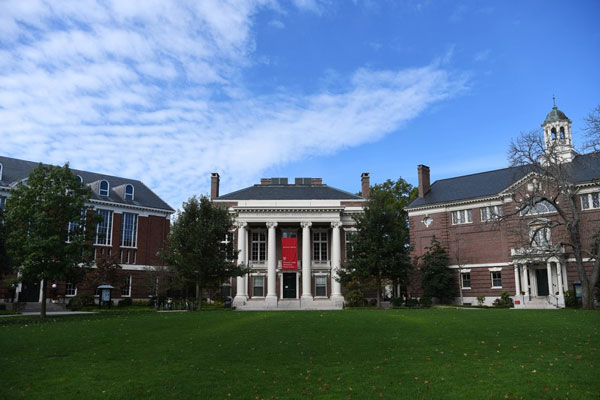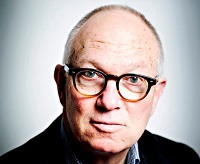
COMMENT | IAN BURUMA | Claudine Gay, Harvard University’s first Black female president, was forced to resign after weeks of pressure to step down. But everyone involved in the controversy that pushed her out looks bad.
The ostensible reason for her ouster was sloppy academic writing – mostly the failure to credit other academics whom she quoted almost word for word in previously published work. But those discoveries followed allegations of anti-Semitism and double standards. When asked by Republican congresswoman Elise Stefanik whether student demonstrators “calling for the genocide of Jews violates Harvard’s code of conduct,” Gay replied that it “depends on the context.”
There is little doubt that if the question had referred to the genocide of Black people, context would not have been required. But Gay was walking into a nasty trap. Stefanik had deliberately blurred the distinction between calling for genocide and supporting a Palestinian intifada (armed rebellion). The latter may involve violence, but it is not genocidal.
The right-wing activists who helped push Gay out of her job also look bad. Led by Christopher Rufo of the Manhattan Institute, they see her career as a symbol of unfair racial preference. Gay, for her part, has accused them of racism. Even if they are not racists, they are mimicking so-called progressives who seek to “cancel” people who fail to conform to their own ideological positions.
Finally, wealthy Jewish donors to Harvard, such as the hedge-fund manager Bill Ackman, also look bad for mounting an unrelenting public campaign against Gay. Donating money should not give one the right to interfere in academic matters. Ackman, too, alleges racism, arguing that Harvard tolerates hatred toward Jews.
The American obsession with race is clearly one reason for this unedifying mess of accusations and counter-accusations. Still, Gay’s ouster – along with that of the University of Pennsylvania’s president, Liz Magill, who also walked into Stefanik’s trap – does reveal something interesting about the changed perception of Jews.
There is no proof that Gay, Magill, or many of the pro-Palestinian demonstrators on university campuses are anti-Semitic. (Cheerleaders for Hamas are a different matter.) But the more fanatical defenders of the Palestinian cause are as much in thrall to the racial obsession as the right-wing agitators are to opposing “diversity, equity, and inclusion” efforts. They see the violence in Gaza and the Israeli oppression of Palestinians as an example of white supremacy.
On this view, Israelis are white people brutally tyrannizing people of color. That is why pro-Palestine demonstrators shout slogans like, “IDF, KKK, you’re all the same!” – as though Israeli soldiers are like the hooded southern racists who once lynched Black people. The fact that most Israelis hail from Arab countries and are physically indistinguishable from the Arab population seems irrelevant.
This view represents a fundamental change from anti-Semitism in the past. Before the nineteenth century, Christians persecuted Jews because they were supposedly the killers of Christ. But as modern nation-states were founded, and as Jews became less religious and socially emancipated, new bogus biological distinctions were invented to justify an ancient hatred. Far from seeing Jews as fellow white people, European and American bigots singled them out as an alien race.
What anti-Semites of all political persuasions shared was the conspiratorial suspicion that Jews constituted a global cabal that exercised immense power behind the scenes. While right-wing anti-Semites saw Jews as Bolshevik conspirators bent on undermining the purity of nations, communists saw them as capitalist plutocrats oppressing the working class. The main reason why Zionism appealed to many Jews is that having their own state would free them at last from being persecuted as permanent outsiders, or as “rootless cosmopolitans,” as Stalin called them. In Israel, finally, they could feel rooted.
But as some critics of Israel foresaw quite early on, this would result in Israel gradually adopting some of the very same characteristics as the nations that had persecuted Jews in the past: notions of ethnic exclusivity, chauvinism, and military swagger. Though Hannah Arendt had been a Zionist in the 1940s, she became a critic when she saw that the state for Jews was becoming a Jewish state – not a haven for persecuted refugees, but a country defined by ethno-religious nationalism and a sense of moral untouchability based on a history of victimhood.
This transformation took time. Many of the early settlers were left-wing idealists. But the current Israeli government includes ministers who are unabashed racists. Itamar Ben-Gvir, the minister for national security, has been convicted a half-dozen times for incitement. For this reason alone, Israel is now much admired by far-right politicians in Europe and the United States. In the 1930s, “America Firsters” such as Charles Lindbergh, the heroic pilot, were often anti-Semites who showed more than a little sympathy for Nazi Germany. Yet today, Donald Trump and others who call for “America First” are ardent admirers of the Jewish state, which in turn explains why so many activists on university campuses compare the Israel Defense Forces to the KKK.
Anti-Semites used to associate Jews with the US, because European nationalists viewed both as symbols of rootless cosmopolitanism. Now, pro-Palestine demonstrators associate Israel with the US, because they view both countries as symbols of white oppression of people of color. Perhaps this was the context of which Gay spoke when she tried to answer Stefanik’s trick question. One wishes that Gay had expressed herself less clumsily. One also wishes that the US, including its highest institutions of learning, could temper their obsession with race. But that seems a very tall order at the moment.
****
 Ian Buruma is the author, most recently, of The Collaborators: Three Stories of Deception and Survival in World War II (Penguin, 2023).
Ian Buruma is the author, most recently, of The Collaborators: Three Stories of Deception and Survival in World War II (Penguin, 2023).
Copyright: Project Syndicate, 2024.
www.project-syndicate.org
 The Independent Uganda: You get the Truth we Pay the Price
The Independent Uganda: You get the Truth we Pay the Price





